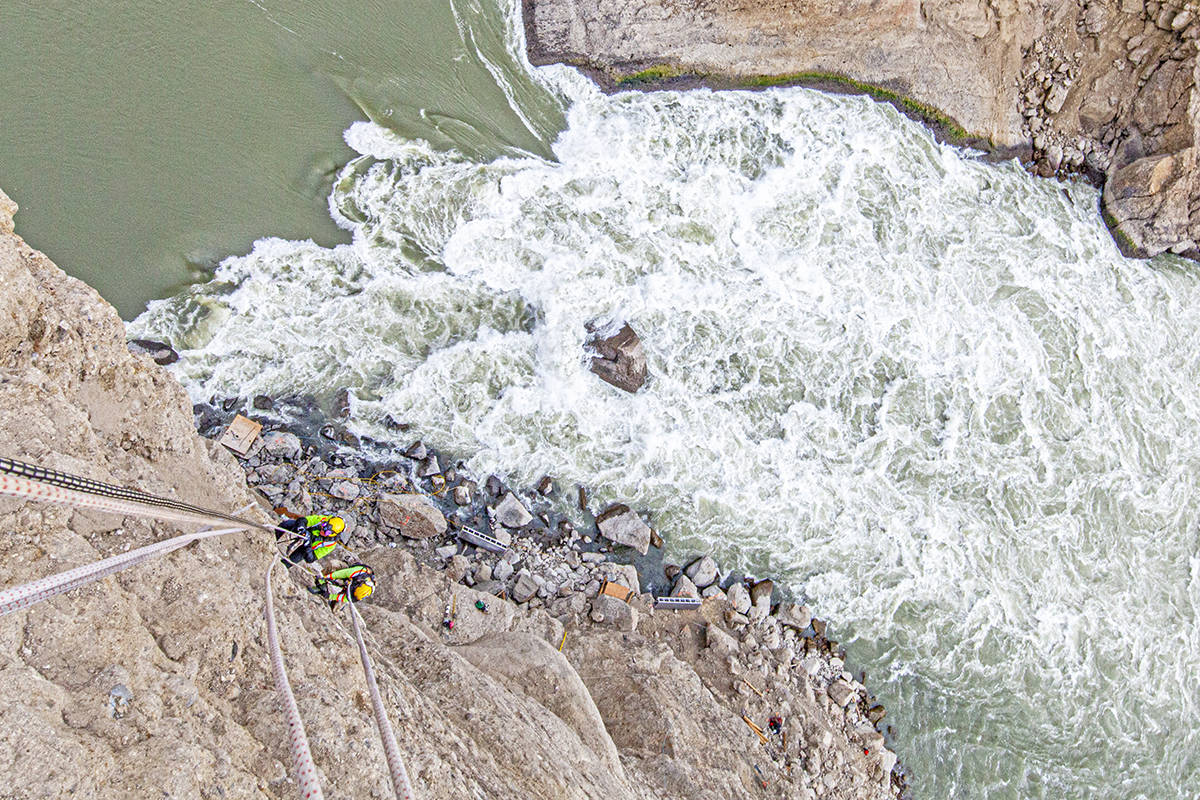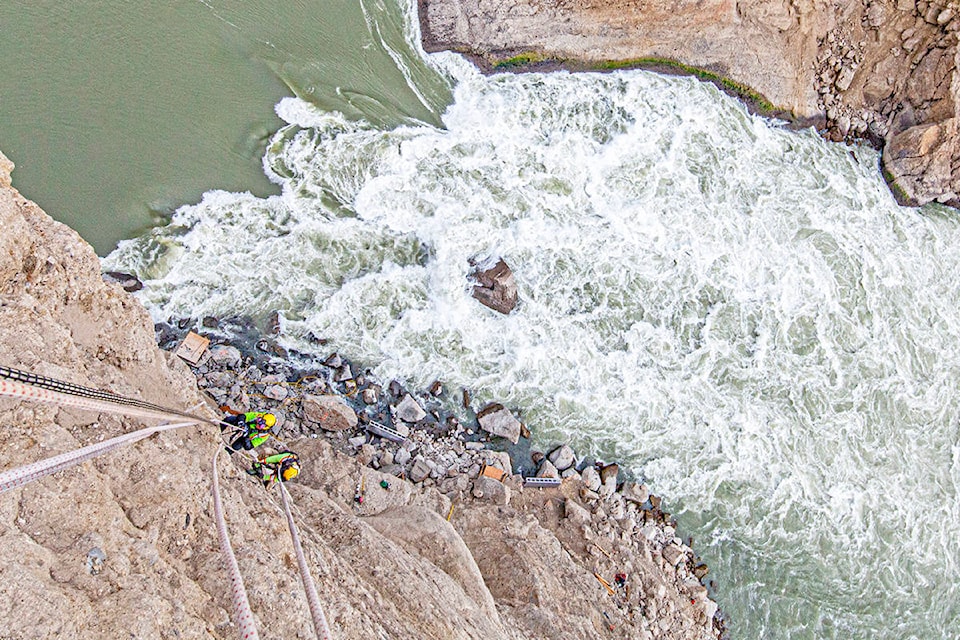First Nations leaders from across B.C. are calling for immediate action on the Fraser River to remove the blockage at the Big Bar landslide site within 60 days to allow fish passage.
A “state of emergency” needs to be declared on the Fraser River, said Regional Chief Terry Teegee of First Nations Leadership Council (FNLC), urging the federal government to “urgently prioritize resources” to tackle the crisis.
Remediation work for remote slide site being planned now by Fisheries and Oceans Canada and partners, may not be completed in time to save some salmon runs from extinction, some are warning.
“To this day, B.C. First Nations have maintained a sacred relationship with the salmon that migrate through their territories and beyond,” Chief Teegee said. “Extreme efforts and resources must be put forth immediately to preserve cultures and ways of life that have existed for thousands of years.”
READ MORE: Helicopter transfer tried to move fish upstream
DFO issued a request for information (RFI) on Nov. 27 to seek the contractors with expertise in construction and environmental mediation needed “to re-establish natural fish passage” by removing the blockage.
“The intention is to ensure that construction activities begin as soon as possible, and while water levels in the Fraser River are low,” according to DFO in an update on Dec. 2.
READ MORE: Sockeye were stymied in a bad year
But the future impacts on Early Stuart and chinook from Big Bar blockage in particular constitute an emergency in the making right now, according to Sto:lo Tribal Council Grand Chief Ken Malloway, a Sto:lo fisherman, and member of the First Nations advisory panel on the Big Bar slide.
“The thing we’re concerned about, at this time of year with the water dropping, is there is still some very large rock that needs to be removed,” said Malloway. “They need to be in there now blasting and removing rock.”
Chief Joe Alphonse, tribal chair of the Tŝilhqot’in National Government, said the salmon stocks need “all the help” they can get.
“Right now there are low water levels on the Fraser. So if anything substantial is to happen it has to happen by the month of January,” Chief Alphonse said, not February or March. “There is only a small window of opportunity. They have to get on it.”
Last summer the Tŝilhqot’in were expecting to see a return of a million fish from the Chilko Lake run, the “healthiest, strongest run” of sockeye on the Fraser, he said. But only about 170,000 sockeye returned.
READ MORE: Removing rock from the river is the goal
Responding to early slide reports in July 2019, an unprecedented government-to-government-to-government protocol was put in place, led by the Incident Command Post management team based in Kamloops. Unified team efforts brought together provincial, DFO, and First Nations, who all worked toward freeing the fish trapped behind the slide. Current Big Bar landslide updates can be found here .
@CHWKjourno
jfeinberg@theprogress.com
Like us on Facebook and follow us on Twitter.

